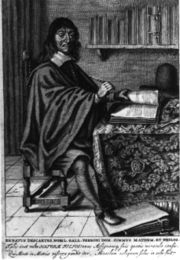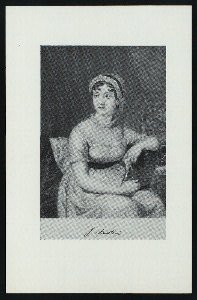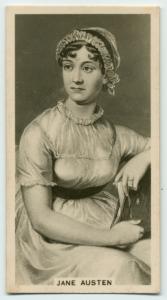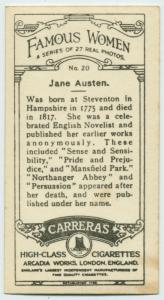I. Reflections on Descartes
|

Click on image for source and larger view |
| II. Who is Jane Austen?
III. Thinking with Austen A. Irony: what is it? IV. Reading Austen with a little help from Descartes A. Working from the contents of consciousnessV. Thinking about our categories: ►If Aristotle were the director of Core Course, in which quarter would we read Persuasion? |

Click on image for source.   |